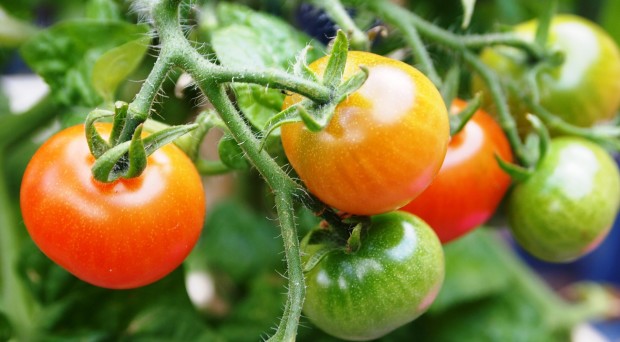
 Tomáš Čermák is a Research Specialist at the College of Biological Sciences, University of Minnesota.
Tomáš Čermák is a Research Specialist at the College of Biological Sciences, University of Minnesota.
Can you briefly outline the goals of your research?
Although the field of genome engineering has been progressing rapidly since the discovery of TALEN and CRISPR/Cas9 nucleases, making precise modifications to plant genomes is still a challenge. So far, only a few groups have succeeded in altering the genome of a crop plant in a custom way.
We decided to develop more efficient methods to make gene targeting in plants less challenging and show they can be applied in an important crop species.
Why has it been difficult to modify plant genomes in the past?
We did not have efficient tools to manipulate the genome in a controlled way in the past. This has now changed and TALENs, CRISPR/Cas9 or other types of site-specific nucleases can be used to induce targeted double strand breaks in the gene of interest.
These breaks are then repaired by the mutagenic non-homologous end joining which often results in gene inactivation or, less frequently, by homologous recombination which results in precise repair. So the tools are now in place, but there are still additional challenges when it comes to modifying specifically plant genomes.
Plant cells, protected by cell walls, do not easily take up exogenous DNA, which must be forced into them biolistically or by the use of a biological agent.
The main problem lies in inefficient methods (compared with many animal cell systems) for delivery of DNA into plant tissues. Plant cells, protected by cell walls, do not easily take up exogenous DNA, which must be forced into them biolistically or by the use of a biological agent – Agrobacterium tumefaciens.
This is not a big problem if a single copy transgene is being inserted into the genome. One copy of the site-specific nuclease transgene is usually also sufficient for induction of targeted gene knock-outs.
However, gene targeting (introduction of precise, custom modifications through the use of homologous recombination) requires a donor DNA molecule carrying the desired modification to be used as a template to copy information and repair the break.
Increasing the copy number of these donor molecules in the cell increases the chances one of them will be used as the template for the repair. However, modulating the copy number of DNA exogenously delivered to plant cells through the above mentioned methods is difficult, and often only one or few copies can be delivered.
How does your technique differ from traditional methods?
Most methods previously used for gene targeting in plants used either plant protoplasts (plant cells without cell walls) as the starting material for DNA delivery, or Agrobacterium-mediated DNA delivery into plant tissues.
In addition, many used pre-inserted landing pads or transgenes as targets. While delivery of DNA into protoplasts is much easier then to intact tissues, regenerating whole plants from protoplasts requires a significant degree of expertise and is only possible in a few plant species.
We combined Agrobacterium-delivery with a new system for replication of the DNA donor molecules within the plant cell to increase gene targeting frequencies.
On the other hand, Agrobacterium-mediated delivery has the above mentioned disadvantages, but remains the most commonly used transformation method. We combined Agrobacterium-delivery with a new system for replication of the DNA donor molecules within the plant cell to increase gene targeting frequencies.
The donor template is placed on a geminivirus replicon, which is released from the Agrobacterium T-DNA, circularized and replicated into thousands of copies, resulting in significantly more transforming DNA compared with traditional methods.
While we previously published a proof of concept of this method in tobacco callus/plantlets, in the current study we extended its use to the first crop species, tomato, which has not been previously modified by gene targeting.
We generated modified plants and showed that the modifications are heritable. We targeted an endogenous gene and demonstrated for the first time, that easily customizable endonucleases (CRISPR/Cas9 and TALENs) can be used in combination with this method.
Perhaps most importantly, unlike other gene targeting approaches in plants, we showed that T-DNA integration is not essential to achieve gene targeting with genimivirus replicons, which has relevance to the regulatory status of crop varieties made using our approach.
Was there a particular aspect of the study you found challenging?
It is always challenging to implement a new method in a new species. The biggest challenge was the optimization of the whole process of recovering plants with gene targeting events which is demanding and requires a significant amount of time.
What are the possible applications of this technique, for tomato or other crops?
Our approach can not only advance basic biology, by making targeted modifications that further our understanding of gene function, but can also be used for crop improvement to create new traits of interest.
This technology allows us to exploit the full potential of genome engineering in plants by extending the list of possible genome editing outcomes with targeted gene insertion, gene stacking or base substitutions for amino-acid/allele replacement. There are numerous traits in tomato and other crops that can be optimized using this technology.
How do you hope this will develop further in the future?
The most sought-after future goal is to make gene targeting in plants so efficient that no selection will be necessary to identify the modified plants.
Although our approach represents a significant advance in plant genome engineering, making precise modifications to plant genomes is still far from routine. The most sought-after future goal is to make gene targeting in plants so efficient that no selection will be necessary to identify the modified plants.
We have moved one step closer to this goal by addressing an important aspect of gene targeting in plant cells – the availability of the donor template. In the next step, we would like to remove the limitation of Agrobacterium transformation and make the replicons movement-competent (be able to move from cell to cell).
That would result in spreading of the replicon carrying the genome engineering reagents from the primarily transformed cells to other cells and further enhance the gene targeting efficiency.
Comments